VENTI provides a viable mechanical alternative to trickle vents in windows and doors. Made in the UK, VENTI are mechanical ventilation systems. Their decentralised units meet Part F of the Building Regulations by delivering continuous, filtered airflow without the energy loss, noise, or aesthetic drawbacks of traditional background ventilation such as plastic or metal slot vents in windows and doors. Even better, they are suitable for retrofit, new build homes, social housing, and extensions. Importantly, VENTI systems improve indoor air quality and reduce condensation and mould risk.
Please see the latest update at the bottom of of this article.
VENTI Mechanical Ventilation System

An excellent alterative to trickle vents in windows and doors, VENTI offers improved indoor air quality, works better than trickle vents, does away with bulky window/door frame heads. It also meets Building Regulations without compromising comfort or energy efficiency. If you don't mind the extra work involved in having them fitted, they're a compelling alternative to trickle vents. And they add an upsell for window and door installers.
4.5
Pros
- Avoids trickle vents in windows and doors
- Controlled ventilation with no cold drafts
- Built-in filtration improves indoor air quality
- Heat recovery reduces energy loss
- Discreet, wall-mounted design
- Building Regulations Compliant
Cons
- Needs qualified electrician
- Higher upfront cost although offset over time
What is VENTI mechanical ventilation?
VENTI was created in direct response to frustration in the fenestration industry with the performance and perception of trickle vents. The team behind VENTI also operates Coastal Group, a well-established supplier of high-quality door and window hardware — including trickle vents.
That experience gave them a front-row seat to a window and door market that increasingly sees trickle vents as a box-ticking exercise, rather than a functional solution. Homeowner projects meet Building Regulations and their door and window installers are compliant.
Rather than supplying more products that don’t solve the real problem, VENTI was founded to offer a working, compliant alternative to Approved Document F — the Building Regulations covering ventilation. VENTI suits both replacement and new windows in dwellings, commercial buildings and social housing.
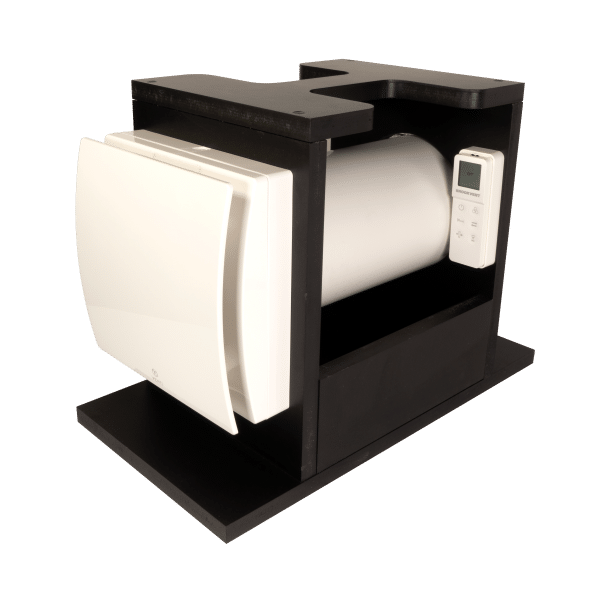
The VENTI Solution to Trickle Vents in Windows and Doors
Installers don’t like trickle vents and homeowners are often confused as to whether they need them or not.
The door and window industry in recent years has tried to do their best with making windows and doors look aesthetically pleasing with trickle vents. Brands such as Smart Systems and Aluco have integrated the trickle vent into the door head, so it’s part of the frame and can also act as a weather bar.
Door and window U-Values aren’t calculated with trickle vents fitted and neither are security tests carried out with these in-situ either. Studies have shown that they often underperform in use as well.
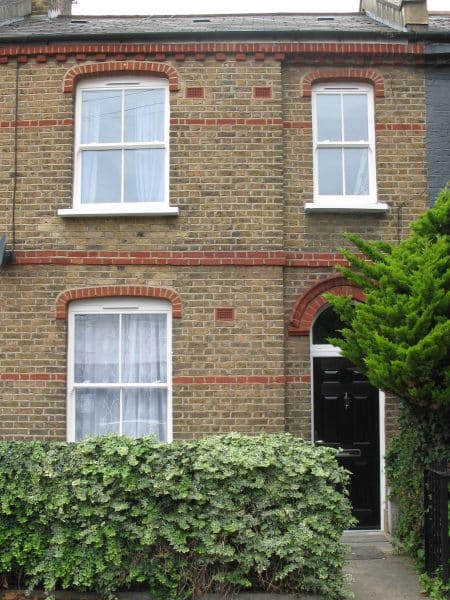
The best versions of window vents with hybrid windows and doors such as Rationel and Velfac and Aluco Steel Look where their windows and doors offer the most discreet positioning of trickle ventilation we’ve seen in any window and door.
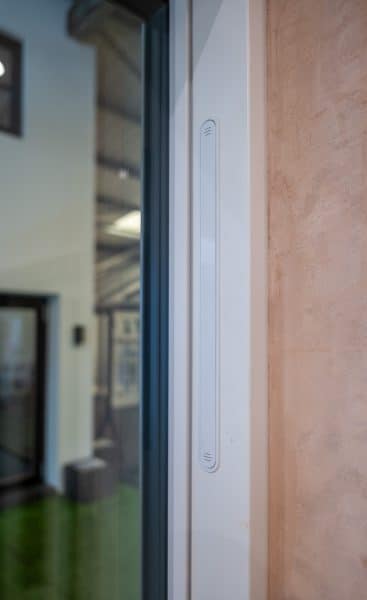
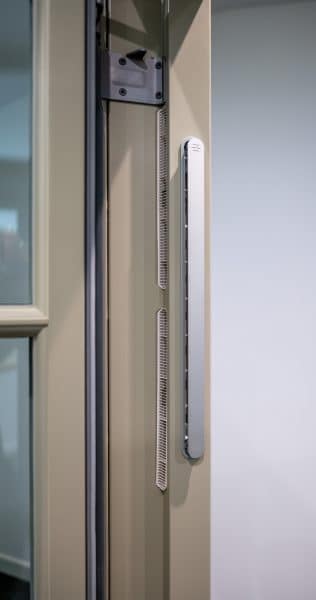
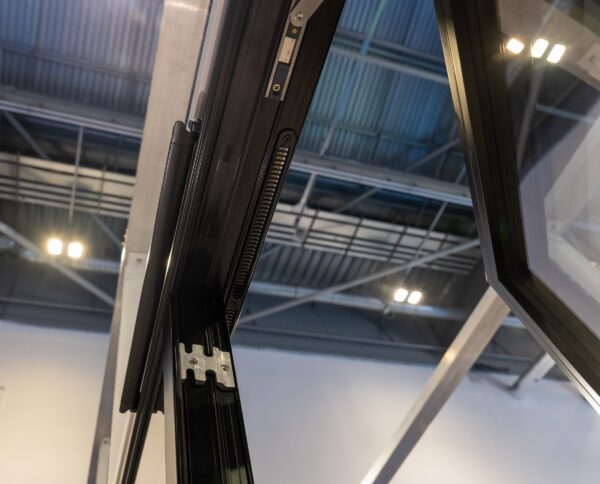
But that said the issues with trickle vents still remain and if you’re prepared to pay more, you can do away with them altogether. This is where VENTI comes in with their product range.
Problems with mould and tenant health in social housing is routinely reported. VENTI says their solutions are especially suited to social housing, where building managers need reassurance that the ventilation system is delivering airflow, regardless of user behaviour, such as keeping vents closed.
Design and Aesthetics
VENTI mechanical ventilation products have been designed with discretion and modern living in mind. Once fitted all you see is a discreet and low profile panel inside and equally unobtrusive ventilation outside.
There are subtle wall fascia options that blend into the interior, avoiding the visual impact of trickle vents or large ducted installations. Each unit is removable for cleaning, and most are styled to suit a broad range of property types, from new-builds to retrofits.
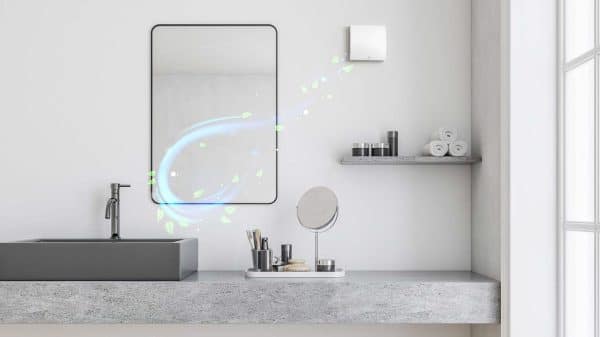
VENTI products have been designed with discretion and modern living in mind. The unit itself that’s hidden in the wall looks initially cumbersome, but once fitted all you see is a discreet and low profile panel inside and equally unobtrusive ventilation outside. There are subtle wall fascia options that blend into the interior, avoiding the visual impact of trickle vents or large ducted installations. Each unit is removable for cleaning, and most are styled to suit a broad range of property types, from new-builds to retrofits.
VENTI’s choice of branding — inspired by the lavender plant — reflects their ambition to reposition ventilation as a feature of wellbeing and home comfort rather than an afterthought. Lavender plants are even included with some installations, a small but considered touch that supports this broader brand narrative.
The Venti Mechanical Ventilation Product Range.
Products available in the VENTI range are for single rooms such as habitable rooms or wet rooms. Additionally, there is a whole house centralised solution (the most expensive). For social housing or landlords with multiple properties, there are services available to solve condensation and mould issues in old and new housing stock.
| Product | Type | Key Features |
|---|---|---|
| FLUXO | Single-room MVHR | For bedrooms & living areas. Alternate flow with heat recovery (up to 82%). Ultra-quiet (from 10 dB(A)). |
| AUREN | Single-room MVHR | For bedrooms & living areas. Wireless remote, variable speeds, multiple modes. |
| ARIA | Continuous Extract (dMEV) | For bathrooms & kitchens. Smart humidity control and adaptive run-on timer. |
| UMIDEX | Centralised MEV | For multiple rooms. Humidity sensors, adjustable speeds, wall or ceiling mount. |
| TRATTO | Intermittent Extract Fan | For simple upgrades. Low-energy impeller, optional timer and humidity sensor. |
All products are designed to run continuously, with extremely low power consumption (e.g. ~£5/year for FLUXO), making them practical for energy-conscious homes.
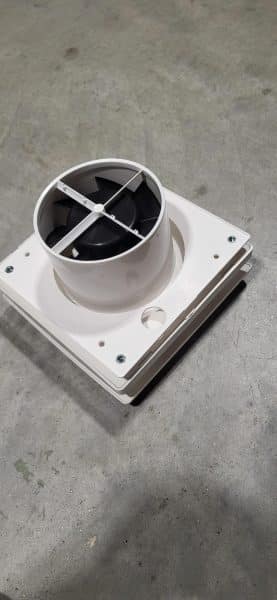
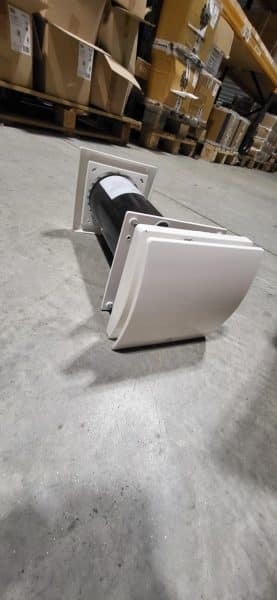
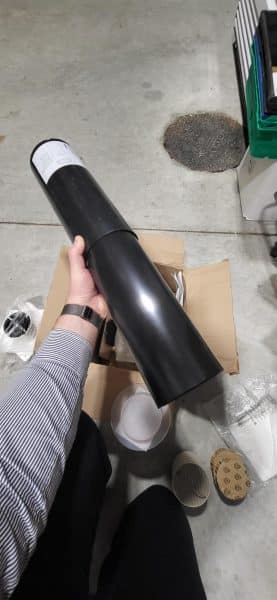
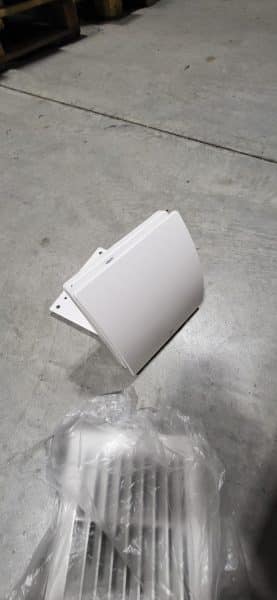
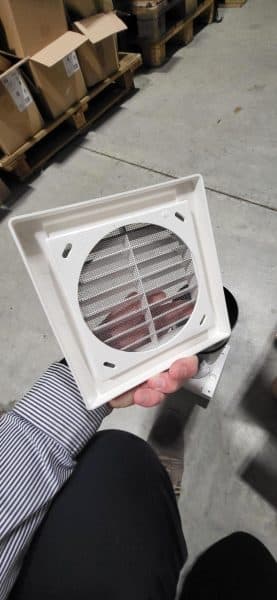
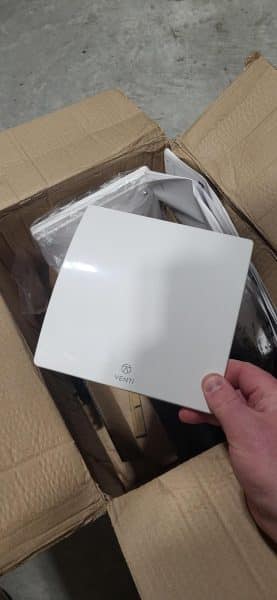
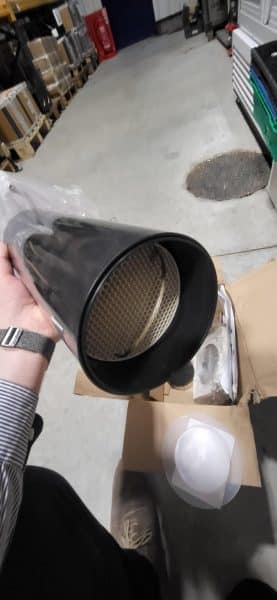
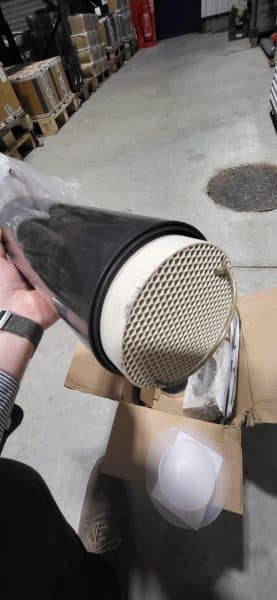
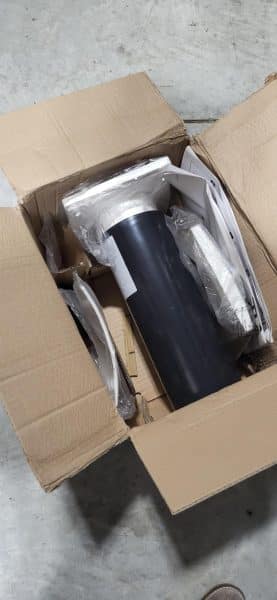
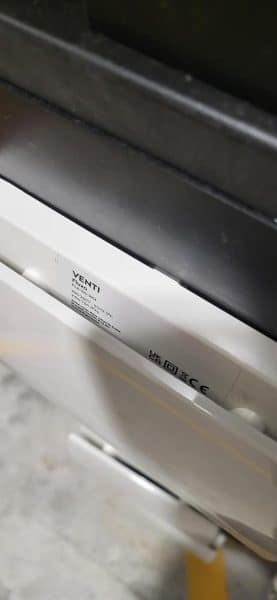
How VENTI fits in the home
The units need fitting and connecting by an approved electrician, but this should not be a difficult job for a certified professional.
Your professional contractor will need to drill a 108mm or 158mm hole (depending on the model) in your wall for the tubing to pass through, which is then sealed with foam. The VENTI unit is then assembled as the individual product instructions and connected to the building power supply. There are other fitting options available as well, such as connecting to ventilation pipework within an entire building.
Energy Efficiency with VENTI mechanical ventilation systems.
One of the key benefits of VENTI’s approach is the combination of energy efficiency and performance. By using mechanical systems that run continuously and recover heat from extracted air, the VENTI range can support airtight building designs without the energy penalties associated with trickle vents. Most products operate at very low sound levels and offer options for intelligent humidity and occupancy control, reducing the need for manual input while keeping indoor air fresh and dry.
These systems also remove the need to create openings in window frames, helping maintain the original thermal and acoustic performance of new or replacement glazing.
How Much Does VENTI Cost?
Pricing for VENTI systems will vary depending on the system selected, the number of units required, and whether supply-only or supply-and-installation is required. As an approximate guide:
| Product / System | Typical Use Case | Approx. Cost (incl. VAT) |
|---|---|---|
| FLUXO (4” unit) | Single-room MVHR (e.g. bedroom) | £395-£445 |
| FLUXO (6” unit) | Larger rooms needing more airflow | £445–£470 |
| AUREN | Bedroom/living area with remote modes | Similar to FLUXO pricing £495 – £619 |
| ARIA | Wet rooms (bathroom, kitchen) | £125–£445 (depending on model) |
| UMIDEX | Full multi-room MEV system | £2700–£5,000 per full install |
| Small retrofit setup | 2–3 units for single extension | £1,000 based on single room solution |
FLUXO and AUREN units typically cost more than standard intermittent fans, but the low running costs and benefits of heat recovery may offer longer-term savings. Centralised systems such as UMIDEX will be more expensive upfront but suitable for whole-home strategies.
Whilst VENTI is not the cheapest solution, there are reasons to consider an MVHR System if your budget allows:
No more trickle vents needed
The most obvious advantage is compliance with building regulations without the bulky add-ons to the heads of your windows and doors. Aluminium windows tend to manage trickle vents better than upvc.
New build homes fitted with uPVC windows, where you have no choice in the window selection are frequently the worst culprits, choosing the cheapest possible windows and often with no consideration for aesthetics.
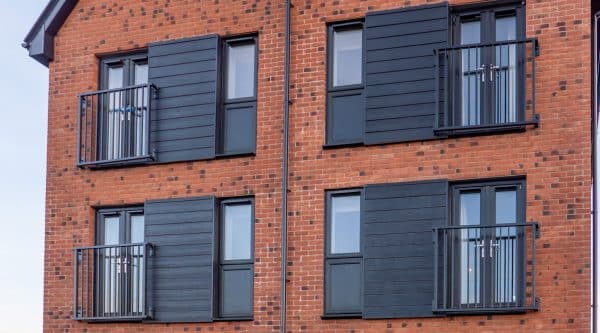
Better for landlords and tenants
More effective ventilation and moisture management, especially in rented accommodation. New build flats with no outside space frequently suffer from excess moisture due to tenants or owner-occupiers having to dry washing in the home. There is also the tendency to close the trickle vents in winter or all year round. Some smaller flats have windows on one elevation only making the problem of efficient airflow even worse for occupiers as shown in a recent study.
No more broken or weather-damaged trickle vents
The upfront cost may be greater, but when your new windows and doors are out of warranty, you won’t have issues trying to source replacement trickle vents. This is especially the case with the external element of trickle vents where the plastic can become brittle due to sun damage and exposure to the elements. Products are frequently obsolete in the door and window industry. An MVHR system can make more sense here too, despite the outlay. Trickle vents in rental property are also frequently broken because new tenants aren’t always familiar with what they are or how they work.
Could save money on future property maintenance
It’s important to also consider that the cost of a mechanical ventilation system should be weighed against the energy losses and potential remedial costs (such as damp treatment or redecoration) associated with poor ventilation or reliance on trickle vents.
They simply do away with any drawbacks with trickle vents in windows and doors
Whilst we have no issue with trickle vents as door and window information website. We are fully behind the need for effective ventilation in the home and the benefits of fresh airflow and reducing mould and moisture. The reality with trickle vents is that they do come with drawbacks. Some companies have come up with ingenious ways to not have trickle vents on the doors and windows, depending on how your room is designed. So it is worth getting in touch with us to find out more about this.
A sales opportunity for door and window installers
If you are an installer and frequently come up against objection to trickle vents, whether on compliance or customers don’t understand or want them, VENTI can provide an additional upsell for your business. VENTI is presently also looking for more door and window installers to partner with on a referrall basis.
Other Products to Compare with VENTI
For homeowners or professionals exploring alternatives to trickle vents, other options to consider include:
- MVHR systems from brands such as Vent-Axia, EnviroVent, or Nuaire.
- Centralised extract systems with ducted outputs to minimise room-by-room installation.
- Passive stack ventilation or hybrid systems in low-use areas.
That said, VENTI’s specific emphasis on single-room decentralised systems makes it particularly useful for retrofits, partial upgrades, or properties without a full ducted ventilation strategy.
More Information, Where to View and Buy
VENTI is supplied direct and offers design and quotation support for both individual homeowners and housing professionals, including social housing providers, architects, and window and door manufacturers and installers. Contact us today for more information.
While the Door and Window Experts Website does not endorse or recommend specific brands, we include VENTI here as an example of a company offering an alternative to trickle vents. If you’re interested in improving indoor air quality with a mechanical solution, and especially if you’re planning a new build or airtight renovation, VENTI may be worth contacting for a quote.
Latest Update:
Statement Regarding Recent Ventilation Claims
We’ve recently seen claims circulating online suggesting that trickle vents are the cause of widespread remedial issues across the industry.
The Door and Window Experts Website does not endorse or support these claims.
While it is correct that Part F allows for different methods of achieving ‘adequate ventilation’, the use of trickle vents remains the most common and widely accepted route to compliance.
Suggesting that installers are facing a “wave of callbacks” due to trickle vents is a serious claim—and one that, to date, lacks any published evidence we know of.
Plasterboard staining, oxidisation, and sill damage can result from a wide range of building and installation issues. Blaming trickle vents alone oversimplifies the issue and risks misleading both professionals and homeowners.
We encourage anyone reading such statements to consider the context and motivations behind them—particularly when they come from those promoting alternative systems.
Our goal is to offer balanced, impartial guidance based on real-world use, not marketing agendas.
We continue to support proper ventilation design that meets Building Regulations, considers occupant health, and aligns with manufacturer recommendations.

